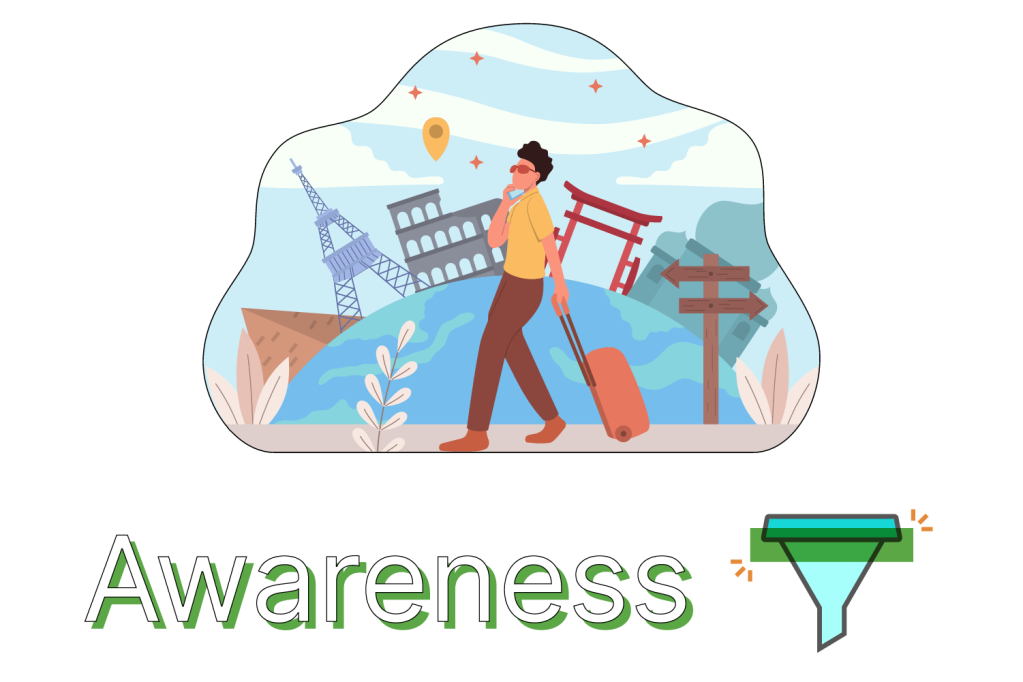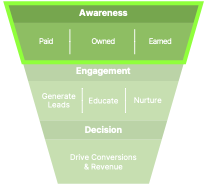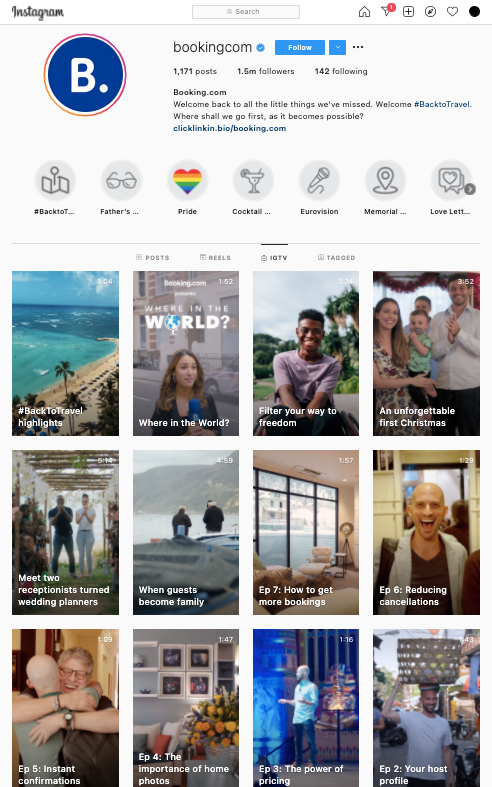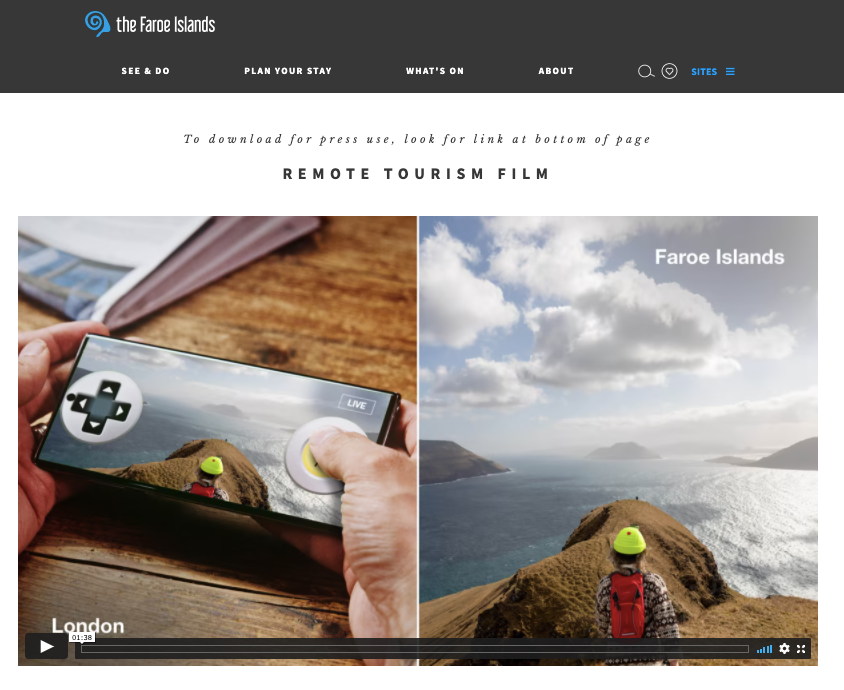How to Optimize the Top of the Funnel with Content for Travel & Tourism

Table of Contents
- Understand content marketing for top of the funnel
- Incorporate multiple channels in marketing funnel stages
- Do your keyword homework
- Don’t forget about tracking metrics
- Build successful marketing funnel stages
When we talk about The Content Marketer’s Funnel, lead generation gets a lot of attention. People get excited about new subscribers for their travel tips newsletter or a new booking for one of their luxury tours. This type of lead generation certainly deserves focus, but we need to remember that it’s impossible to move a consumer through this stage of the funnel if they aren’t in the funnel to begin with.
Think about this challenge through the lens of the Travel & Tourism industry. Like most consumers, travelers often need to do research before they’re ready to make a reservation. This is where top-of-funnel content comes into play. Done right, it can be the first step in turning someone who is just looking into someone who is booking.

Understand content marketing for top of the funnel
The top part of the content marketing funnel, the awareness stage, establishes your brand as an authority and gets your name out there. The goal is to draw a wide variety of people to your brand through engaging educational information. Think about the questions your audience has, and provide answers.
Reaching audiences outside your traditional targets will be crucial this summer with travel restrictions lightening and the tourism industry rebounding. You’ll be able to do this with three types of content: paid, earned, and owned.
- Paid content refers to paid search through a marketplace like Google Ads, sponsored content, and paid social media posts. It helps you reach people who don’t already know your brand and allows advertisers to be as broad or as targeted as they want.
- Earned content is when journalists and influencers pick up your press releases or highlight your initiatives in their articles. You have less control over the message, but these mentions get your story in front of new audiences and provide third-party credibility.
- Owned content, like your website copy, podcasts, and events, fuels organic search and SEO. Considering what your audience is searching for can spur ideas for blog posts and videos, eventually upping your presence on SERPs.
To attract potential customers on social media, travel site Booking.com uses top-of-the-funnel video content across their different profiles. They publish owned content through IGTV to spotlight first-person experiences from guests. They also use paid video ads and featured videos on Facebook to encourage sharing of travel stories and get people thinking about vacations. One campaign was featured in an article titled “7 Best Travel Brands on Social Media (and What We Can Learn from Them”), an earned content boost.

Incorporate multiple channels in marketing funnel stages
In a world dominated by social media, every travel business has a perfectly curated feed filled with blue skies and smiling guests. If you want to stand out and get your audience to stop scrolling, focus on telling a consistent and engaging story across your channels.
For top-of-the-funnel content to be effective, incorporate a multi-channel approach. If your strategy is solely focused around social media, your audience will lose interest when they notice your lackluster blog or website.
Extend campaigns across several channels, including visual media, like Instagram, but also written content, like blog posts. Feature brand champions in videos and create first-person guides to hidden gems. Highlight the local quirks in your pitches to influencers while detailing those idiosyncrasies on your website.
The COVID-19 pandemic closed the tourist-friendly Faroe Islands to hikers and explorers. To keep potential visitors excited about coming to the islands, the local tourism organization created a campaign called Remote Tourism. They offered live video tours with locals. But instead of a guided tour curated by locals, the viewer could direct the person giving the tour (in real time) to spend time in areas the viewer preferred

The team behind Remote Tourism promoted the event through earned media, a dedicated landing page, and a significant social campaign. Once the tours ended, they continued to promote the recorded tours through multiple channels. The landing page included press materials which made it easy to include high-quality images in earned media articles.
Do your keyword homework
Travel readers are more likely to use Google than social media to find answers to their questions, and top-of-the-funnel content is perfect for expanding your target keywords. Experiment with relevant (or even tangential) keywords to see what is most effectively getting your word out and providing valuable answers to your audience’s questions.
If you aren’t already pulling keyword ranking data, tools such as Ahrefs or Moz can help you understand what is currently driving traffic to your site and to your competitors’. Look for general themes, especially in the long-tail part of the list, that might interest potential leads.
For example, let’s say your boutique hotel chain’s website gets traffic from searches about floral design because of the intricate arrangements around your properties. ‘Floral design’ might not be a primary keyword for you, but you should consider creating top-of-the-funnel content related to what makes your bouquets unique. Couple your blog content with a social media campaign encouraging guests to post pictures of floral arrangements they find.
You can also use keywords to identify trends and topics to incorporate into your content – from current events to shifting customer preferences. With this strategy, top-of-the-funnel content can be created in a matter of hours instead of the weeks a whitepaper or webinar might take.
A tool like Currents lets you see trending topics that might affect your audience. For example, when Southwest Airlines Flight 1380 made an emergency landing after an engine failed, travel industry brands leveraged a related search traffic spike to focus on safety and reliability. Be sure to concentrate on general questions that your audience might search, and always approach a sensitive topic with empathy, especially if it involves potential hardship for your readers.
Don’t forget about tracking metrics
Unlike other content marketing funnel stages that focus on bookings and deep engagement, top-of-the-funnel content metrics are often less straightforward. Understand what key metrics a successful top-of-the-funnel content marketing piece would affect and build your monitoring process around that.
The first step in establishing metrics for your awareness stage content is understanding which matter most to your brand. For example, if you want people to book trips on your website, look for metrics that drive actions a few steps before that.
Top-of-the-funnel content is too general to build the trust needed to drive conversions, so number of bookings isn’t a good measurement to watch. Instead, growth in website traffic might be a better KPI for top-of-the-funnel content. Your website can feed your audience the right information to move further down the funnel and ultimately book a trip.
To drive subscriptions to your loyalty program, you might focus on growing your social media following, so you can regularly share the benefits.
Identify these metrics before you create content—know your destination before creating a map to get there. Once you figure that out, tailor the channels and the copy to those metrics. Once your campaign is running, use a content analytics tool like Parse.ly to pull information from all your channels, so you can get a 360-degree view of your campaigns.
Build successful marketing funnel stages
An effective awareness stage strategy sets your sales and marketing teams up for success. By successfully engaging potential customers at the top of the funnel, you’ll dramatically improve your chances of eventually converting them into bookings, even repeat bookings..
Next up: We’ll take a look at the engagement stage of The Content Marketer’s Funnel and how Travel & Tourism companies use content to capitalize on top-level brand awareness.
Ready to learn more about how Parse.ly can provide visibility into the stages of your marketing funnel and better understand what’s working? Schedule a demo today to check it out for your organization.